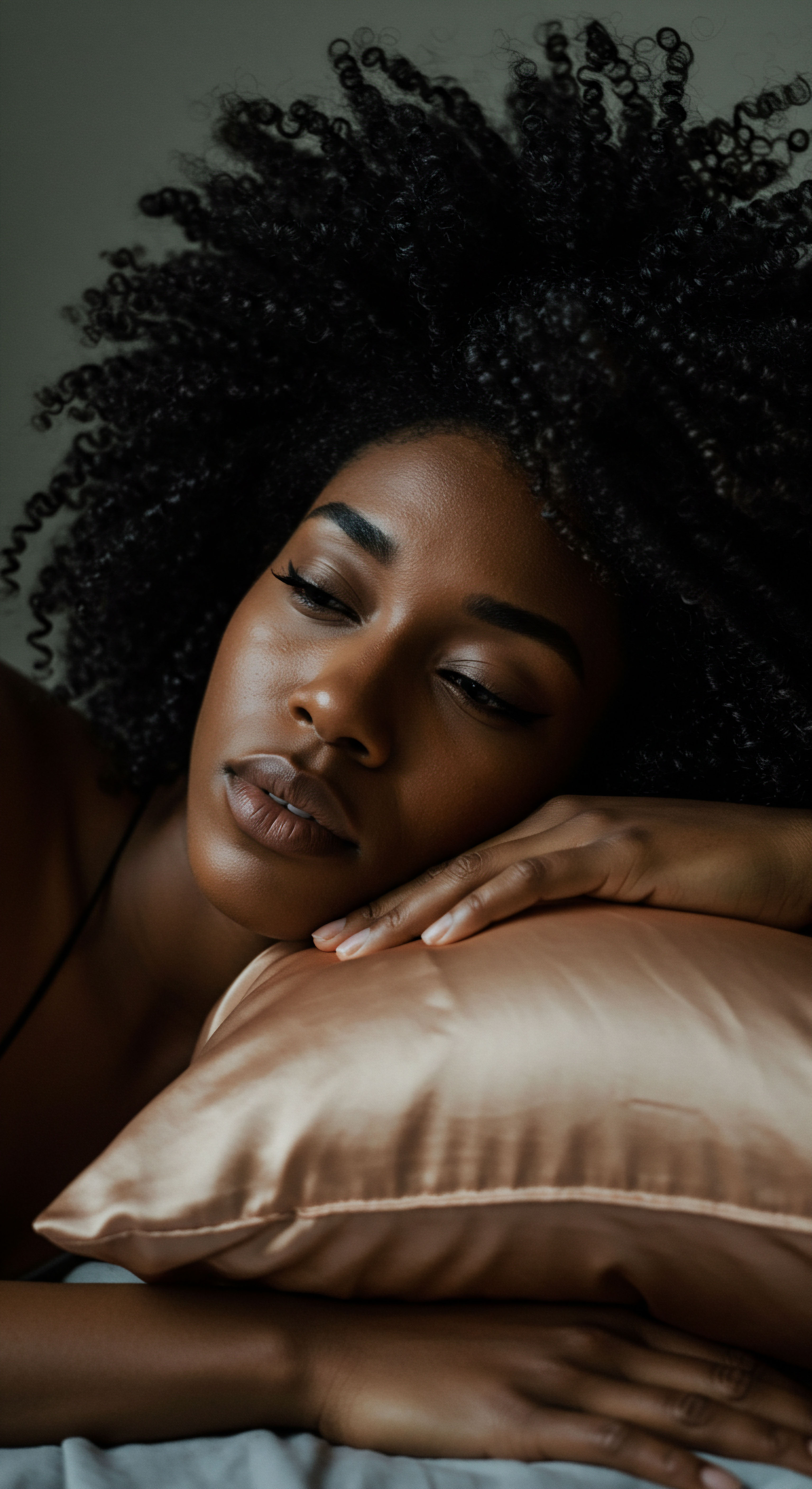
Roots
In the quiet hours of the night, as the world settles into slumber, a silent conversation often takes place between our hair and its resting surface. For those with textured hair, this nightly exchange can determine the morning’s disposition of curls, coils, and waves. A common query arises, a gentle whisper in the beauty community ❉ can silk bonnets truly safeguard textured hair through the night? To approach this query with the warmth and wisdom it deserves, we begin at the very foundations, delving into the delicate structure of hair itself, particularly those strands that carry a history of resilience and beauty.

Hair’s Inner Workings for Textured Hair
Every strand of hair, regardless of its outward pattern, is a marvel of biological engineering. At its core, the hair shaft comprises three primary layers ❉ the medulla, the cortex, and the cuticle. The outermost layer, the Cuticle, acts as a protective shield, made of overlapping, scale-like cells, much like shingles on a roof.
These scales, when healthy and lying flat, provide a smooth surface that reflects light, yielding a natural sheen. For textured hair, with its inherent bends and curves, these cuticle scales naturally lift more readily, making it more susceptible to external influences.
The unique helical structure of textured hair means its cuticle layers are not as tightly sealed as those on straight hair. This characteristic, while contributing to its magnificent volume and shape, also renders it more prone to moisture loss and physical wear. Each curve and coil presents a point of potential friction, where the cuticle can lift, allowing precious hydration to escape and exposing the inner cortex to damage. This predisposition means that even the gentlest nightly movements against a coarse surface can lead to noticeable changes in hair health over time.

Understanding Hair’s Physical Interactions
Friction, the force resisting relative motion of surfaces, poses a considerable challenge to hair integrity during sleep. As we shift and turn through the night, our hair rubs against pillowcases or bedding. The material of these surfaces plays a significant part in the degree of friction generated. Cotton, a common bedding material, possesses a microscopic roughness that can snag and pull at hair strands.
This constant mechanical interaction can cause the cuticle scales to lift further, leading to a roughened surface. A roughened surface translates to hair that feels dry, appears dull, and becomes more susceptible to tangles and breakage. This mechanical strain is a silent, persistent aggressor against hair’s delicate outer layer.
The hair cuticle, a protective outer layer, is particularly susceptible to lifting and damage from nightly friction against coarse surfaces.
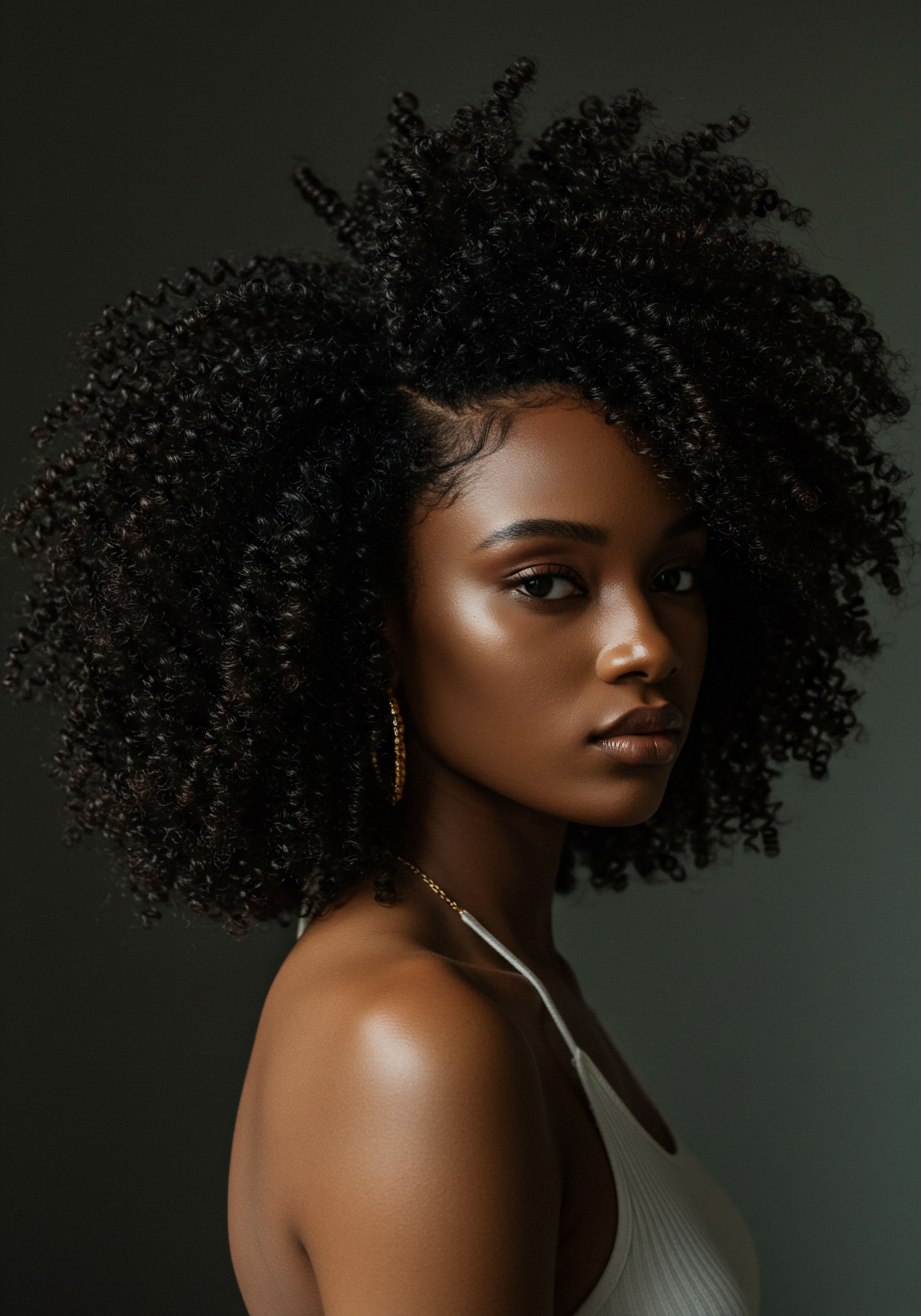
The Silent Loss of Moisture
Beyond physical damage, the environment of our sleep also influences hair’s hydration levels. Hair loses moisture through evaporation, a process known as transepidermal water loss. The porosity of hair, often higher in textured types due to the naturally lifted cuticles, means it can release moisture more readily into the surrounding air. When hair rests against absorbent fabrics like cotton, these materials can actively draw moisture away from the strands, compounding the natural evaporative loss.
This leads to a drier, more brittle state upon waking, which then makes the hair even more vulnerable to friction-induced breakage throughout the day. The interplay between fabric absorbency and hair’s inherent moisture dynamics shapes its nightly preservation.
To preserve hair’s vitality, particularly for textured hair, understanding these fundamental principles of its structure and its interaction with its sleeping environment forms a vital first step. The very act of protecting hair at night is an acknowledgment of its delicate yet resilient nature, a recognition that mindful care begins at the molecular level.

Ritual
Stepping from the foundational understanding of hair’s delicate structure, we turn our attention to the daily practices that shape its wellbeing. The act of preparing hair for rest is more than a routine; for many, it is a ritual, a quiet moment of care before the world quiets down. Among these practices, the use of silk bonnets stands as a prominent recommendation, a practical wisdom passed down through generations and increasingly supported by scientific observation. But how do these seemingly simple coverings truly function within the larger scope of nighttime hair care?

How Bonnets Offer a Gentle Shelter
The primary function of a silk bonnet lies in its material composition. Silk, a natural protein fiber, boasts an exceptionally smooth surface. When hair glides against this smooth surface, the friction experienced is dramatically reduced compared to rougher materials like cotton. This reduction in friction is crucial for textured hair, which, as we have discussed, has cuticle scales that can lift easily.
By minimizing snagging and pulling, a silk bonnet helps keep these scales flat and aligned. This smooth interaction contributes to less tangling, fewer split ends, and a noticeable decrease in overall breakage. The difference in surface texture provides a protective buffer against the nightly movements that can otherwise disturb delicate hair patterns.
Beyond its smoothness, silk possesses a unique characteristic concerning moisture. Unlike cotton, which is highly absorbent and can wick away natural oils and applied products from hair, silk is less absorbent. This property means that a silk bonnet helps hair retain its inherent moisture throughout the night. For textured hair, which tends to be naturally drier and more susceptible to moisture loss, this retention is a significant advantage.
Hair that maintains its hydration levels is more pliable, less prone to frizz, and better equipped to withstand daily styling. The bonnet thus acts as a micro-environment, keeping the hair’s hydration within its protective confines.

Choosing the Right Bonnet Material
While “silk bonnet” is a common term, understanding the distinction between silk and satin is helpful. Silk refers to the natural protein fiber itself, produced by silkworms. It is known for its breathability, luxurious feel, and natural moisture-retaining properties. Satin, conversely, refers to a type of weave, not a material.
Satin fabrics can be made from various fibers, including silk, but most commonly they are synthetic, such as polyester or nylon. While synthetic satin offers a smooth surface that reduces friction compared to cotton, it may not possess the same breathability or moisture-regulating benefits as pure silk. For those seeking the full spectrum of advantages, pure silk, particularly mulberry silk, remains the preferred choice.
The choice of material, therefore, holds considerable weight in the efficacy of the night ritual. A bonnet crafted from genuine silk offers the most comprehensive protection, combining reduced friction with optimal moisture preservation. This considered choice becomes a quiet act of care, setting the stage for hair that feels nourished and looks its best upon waking.
Silk bonnets minimize hair friction and preserve moisture, which significantly benefits textured hair by reducing breakage and frizz.

Nighttime Hair Protection Options
Beyond bonnets, other methods contribute to nighttime hair preservation, each with its own advantages:
- Silk Pillowcases ❉ Similar to bonnets, silk pillowcases reduce friction against hair. They are a good alternative or complement to bonnets, especially for those who find bonnets uncomfortable or prefer to sleep with their hair uncovered. A study in the Journal of Cosmetic Dermatology suggests smoother fabrics like silk prevent hair shaft damage from repeated friction.
- Pineapple Method ❉ This technique involves gathering hair loosely at the very top of the head, often with a soft scrunchie. This elevated position keeps most of the hair off the pillow, reducing contact and preserving curl patterns. It works well for retaining volume.
- Loose Braids or Twists ❉ Sectioning hair into loose braids or twists before bed can prevent tangling and stretching of curl patterns. This method also helps to seal in moisture and can even create defined waves or curls by morning.
| Method Silk Bonnet |
| Primary Benefit Comprehensive friction reduction, moisture retention, full hair coverage |
| Material Focus Silk (natural protein fiber) |
| Method Silk Pillowcase |
| Primary Benefit Friction reduction, moisture retention, comfort for face |
| Material Focus Silk (natural protein fiber) |
| Method Pineapple Method |
| Primary Benefit Preserves curl volume, reduces contact with pillow |
| Material Focus Soft scrunchie (material varies) |
| Method Loose Braids/Twists |
| Primary Benefit Prevents tangles, defines patterns, retains moisture |
| Material Focus Hair itself (secured with soft ties) |
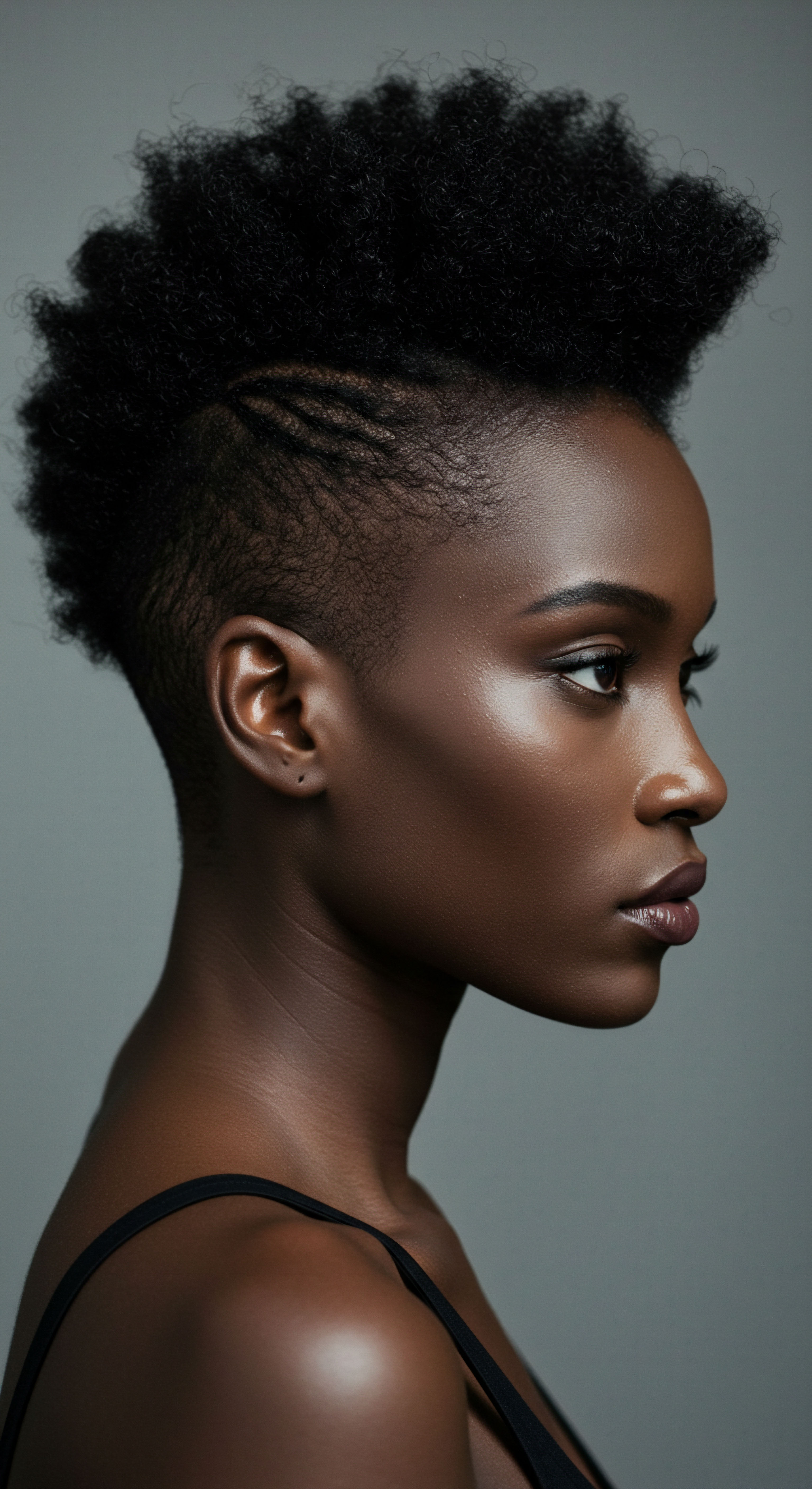
Does Bonnet Usage Prevent Moisture Loss During Sleep?
Indeed, a silk bonnet plays a direct role in minimizing moisture loss. Cotton pillowcases, by their very nature, absorb water. This means that any moisture in your hair—whether natural oils, leave-in conditioners, or water from styling—can be drawn into the cotton fabric as you sleep. Silk, conversely, has a lower absorbency rate for water and oils.
This characteristic allows the hair to retain its natural hydration, preventing the dryness and brittleness that often accompany moisture depletion. The enclosed environment of the bonnet further limits exposure to dry air, acting as a gentle humidity chamber for the hair strands. This dual action of non-absorption and environmental containment makes silk bonnets a significant aid in maintaining hair’s delicate moisture balance through the night.

Relay
As we move from the practical applications of nighttime hair care, a deeper contemplation beckons. The query surrounding silk bonnets and textured hair preservation extends beyond mere surface benefits, touching upon the very fibers of science, culture, and individual wellbeing. Here, we seek to understand the underlying mechanisms and broader implications, moving beyond the obvious to uncover the less apparent connections that shape our hair experiences.
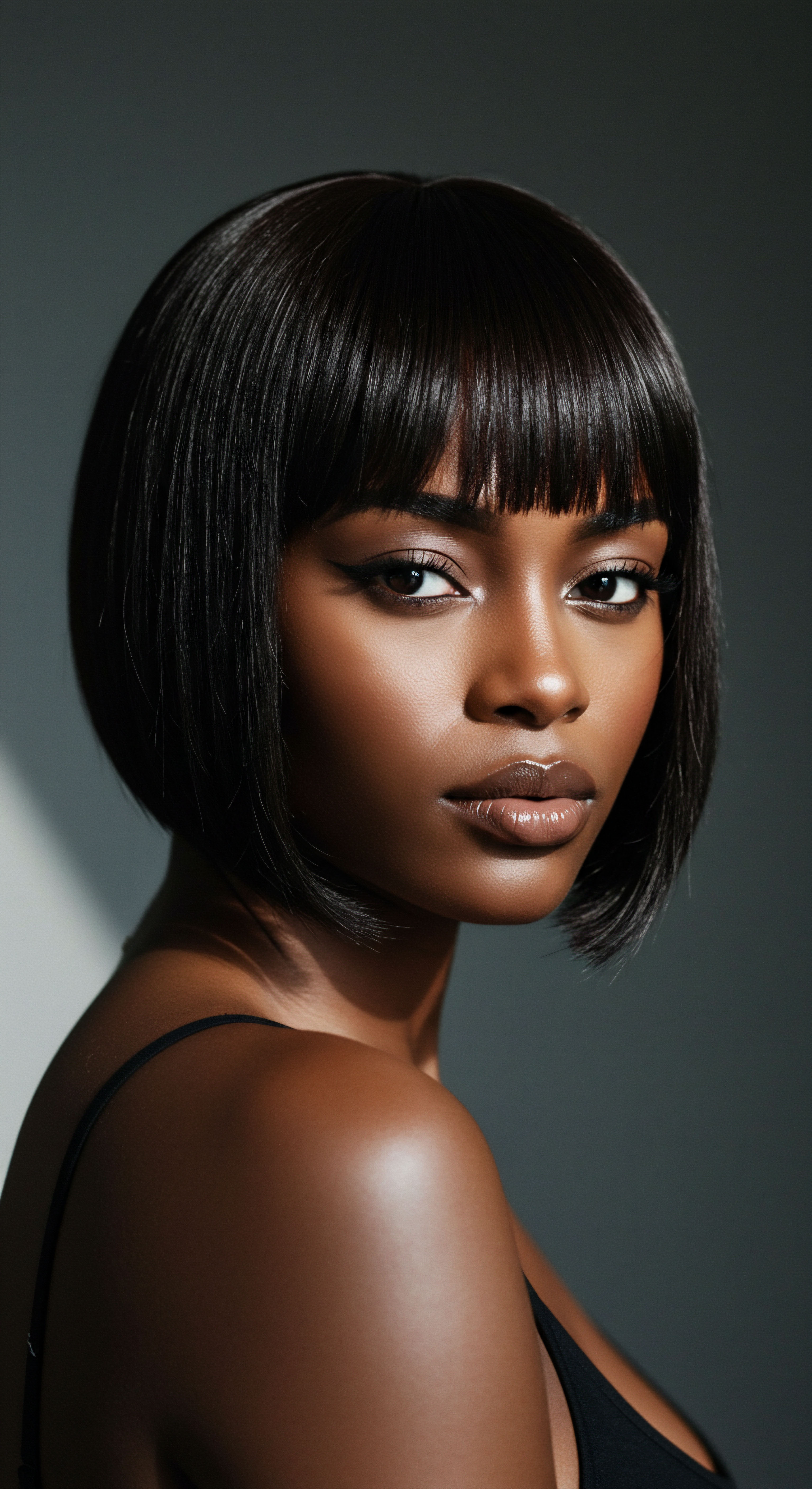
Scientific Insights on Friction and Hair
The science behind silk’s benefit to hair hinges on its unique physical properties. Silk fibers are remarkably smooth, possessing a lower coefficient of friction compared to other common bedding materials like cotton. This scientific measure quantifies the resistance encountered when one surface slides over another. For hair, particularly textured hair with its varied bends and twists, friction is a primary antagonist.
Constant rubbing against a rough surface, such as a cotton pillowcase, can cause the outermost layer of the hair, the cuticle, to lift and fray. This mechanical abrasion leads to a compromised hair shaft, making it vulnerable to moisture loss, tangles, and eventual breakage. A study published in the International Journal of Cosmetic Science observed that resting hair on silk resulted in less friction and reduced mechanical damage when compared to cotton. This laboratory finding lends weight to the anecdotal experiences shared by countless individuals with textured hair.
Furthermore, while many benefits of silk bonnets are widely discussed and observed, direct, peer-reviewed clinical studies specifically examining the effects of silk pillowcases or bonnets on human hair and skin are limited. This absence of direct clinical trials, often due to the high cost of such research in areas not directly linked to disease treatment, means much of the understanding relies on the established properties of silk itself and logical deduction regarding its interaction with hair. Despite this, the physical and chemical characteristics of silk, such as its low friction and reduced absorbency, logically translate to a gentler environment for hair.
The material science points to clear advantages, even without extensive clinical trials focused solely on hair accessories. This observation, while not a detractor from silk’s merits, grounds our understanding in the current landscape of scientific inquiry.

The Hydration Equation
Beyond friction, the moisture dynamics between hair and its sleeping surface are paramount. Textured hair, with its naturally open cuticle, is prone to losing hydration. Cotton, a hydrophilic material, readily absorbs water. This means that not only does cotton draw moisture from the ambient air, but it can also pull precious water and conditioning agents directly from the hair shaft.
This absorption can lead to significant overnight dehydration, leaving hair dry, brittle, and more susceptible to mechanical damage. Silk, conversely, is a protein fiber with a different affinity for water; it is less absorbent than cotton. This property allows hair to retain its natural moisture and the benefits of any applied products, such as leave-in conditioners or oils. The maintenance of optimal hydration contributes to the hair’s elasticity, pliability, and overall resilience against breakage.
The minimal friction and moisture retention offered by silk bonnets align with the physical needs of textured hair, mitigating common nightly damage.

What Historical and Cultural Aspects Connect to Night Hair Protection?
The practice of covering hair at night, or indeed at any time, holds deep historical and cultural roots, particularly within the African diaspora. Far from being a modern beauty trend, hair wrapping has served as a symbol of identity, status, spirituality, and protection for centuries. In many African cultures, intricate head wraps conveyed marital status, tribal affiliation, or social standing.
When Africans were forcibly transported during the transatlantic slave trade, they carried these traditions with them. Despite attempts to strip away cultural identity, head coverings, such as the Tignon Laws in 18th-century Louisiana, which sought to control free Black women by mandating headwraps to signify their social status, were often reclaimed and transformed into symbols of pride and defiance.
This historical context reveals that the act of protecting hair at night is not merely about preserving a hairstyle; it is a continuation of ancestral practices aimed at maintaining hair health and cultural connection. The modern silk bonnet, in this light, stands as a contemporary manifestation of a long-standing tradition of care, adapted with modern materials but rooted in a profound respect for textured hair and its needs. The wisdom of preserving hair, whether for practical reasons of health or for symbolic reasons of identity, has been passed down through generations, evolving with time yet holding its core purpose.

The Interplay of Hair Health and Sleep Quality
Beyond the direct mechanical and moisture benefits, the act of protecting hair at night can subtly influence one’s overall sleep quality and, by extension, hair health. A comfortable sleep environment, free from the discomfort of tangled or pulled hair, contributes to more restful periods. Quality sleep is indispensable for the body’s regenerative processes, including those that support hair growth and scalp vitality.
During deep sleep, the body performs crucial cellular repair and hormone regulation, which directly impact hair follicles. A lack of sufficient rest can elevate stress hormones, potentially disrupting the hair growth cycle and leading to increased shedding.
By creating a serene sleeping experience, a silk bonnet contributes to a cycle of positive outcomes. Reduced hair damage means less stress on the scalp and follicles. A calmer night leads to better sleep, which in turn supports the body’s natural hair renewal mechanisms.
This interconnectedness underscores that hair health is not an isolated concern but a reflection of broader wellbeing. The gentle presence of a silk bonnet becomes a small yet significant element in a larger ecosystem of nightly restoration.

Reflection
As the quiet of night descends and morning light approaches, the question of whether silk bonnets truly preserve textured hair at night finds its quiet affirmation. The journey from the hair strand’s delicate cuticle to the historical echoes of hair wrapping reveals a clear truth. It is in the gentle slide against smooth silk, the steadfast retention of precious moisture, and the quiet continuation of protective practices that the enduring value of these simple coverings rests.
The benefits are not fleeting; they are a soft whisper of care that allows textured hair to meet each new day with a renewed spirit, less burdened by friction, more abundant in its natural vibrancy. This dedication to thoughtful protection, rooted in both science and heritage, continues to shape the story of textured hair, one peaceful night at a time.
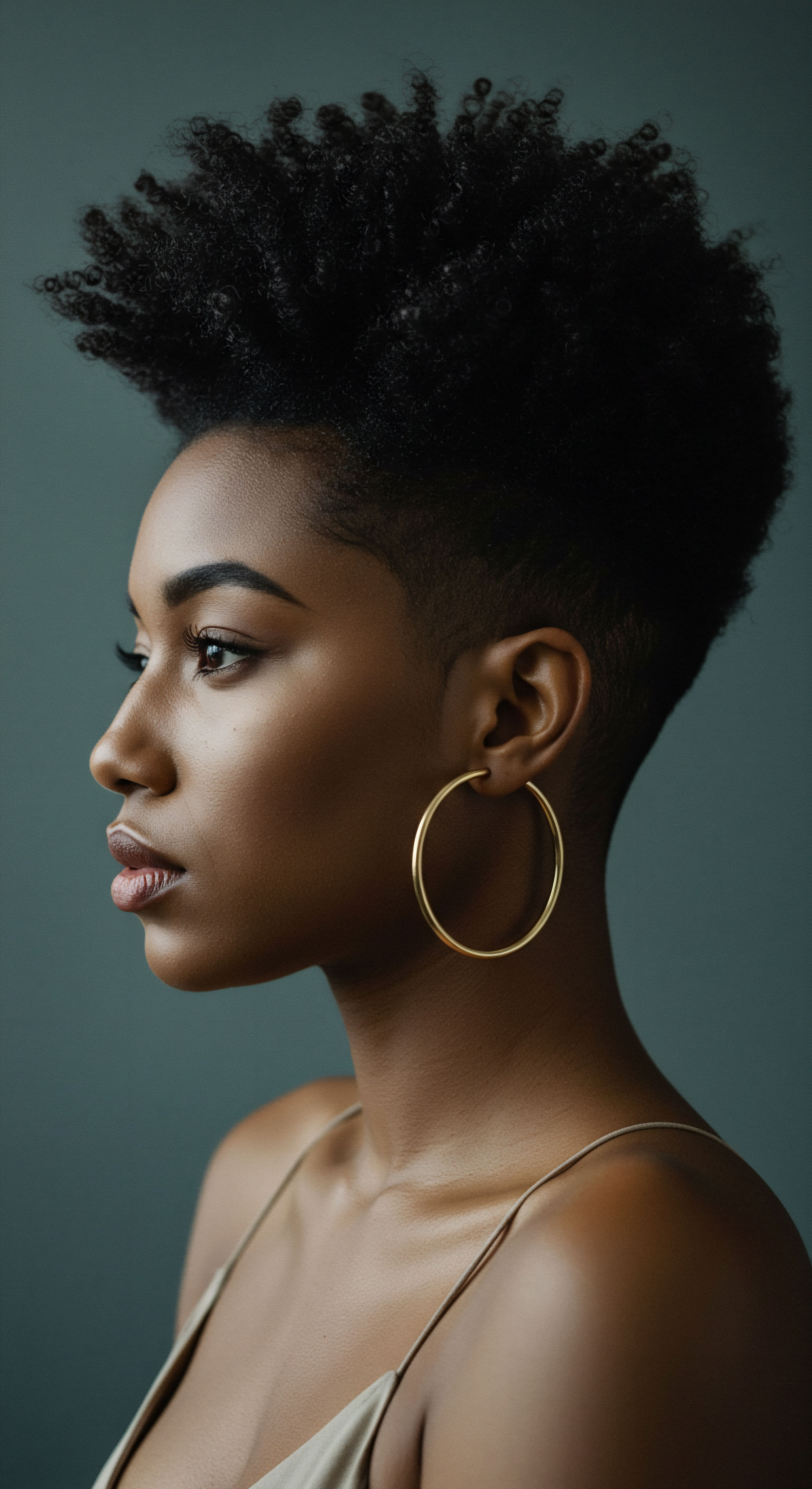
References
- 1. Hino, Y. Nakahara, H. & Morikawa, T. (2006). Silk fibroin film as a scaffold for tissue regeneration. Journal of Biomedical Materials Research Part A, 76(4), 863-871.
- 2. Padol, A. R. et al. (2011). Sericin ❉ A promising biopolymer for various applications. Journal of Biomaterials Science, Polymer Edition, 22(10), 1269-1288.
- 3. Yamada, S. et al. (2001). Moisturizing properties of sericin. Journal of Cosmetic Science, 52(3), 143-150.
- 4. Padamwar, P. B. et al. (2005). Evaluation of moisturizing properties of sericin gels. Journal of Cosmetic Science, 56(4), 213-221.
- 5. Daithankar, S. et al. (2004). Evaluation of moisturizing efficacy of fibroin. Journal of Cosmetic Science, 55(6), 563-570.
- 6. Hata, T. (1987). Low molecular weight hydrolyzed sericin as a hair conditioner. Journal of the Society of Cosmetic Chemists of Japan, 21(1), 34-39.
- 7. Engel, W. & Hoppe, U. (1988). Hair washing shampoo containing sericin and pelargonic acid. European Patent Application, EP0260273A2.
- 8. Yoshioka, T. et al. (2001). UV protection effect of sericin. Journal of Applied Polymer Science, 82(12), 2955-2960.
- 9. Zhaorigetu, S. et al. (2003). Protective effect of sericin on UVB-induced lesions. Journal of Photochemistry and Photobiology B ❉ Biology, 71(1-3), 27-33.
- 10. International Journal of Cosmetic Science. (Year not specified, but content suggests post-2000s). Research on friction and mechanical damage to hair. (Specific article details not provided in snippets, but referenced broadly across sources).
- 11. Journal of Cosmetic Dermatology. (Year not specified, but content suggests post-2000s). Research on smoother fabrics and hair shaft damage. (Specific article details not provided in snippets, but referenced broadly across sources).
- 12. Robbins, C. R. (2012). Chemical and Physical Behavior of Human Hair (5th ed.). Springer.
- 13. Wolfram, L. J. (2003). Human Hair ❉ A Unique Physicochemical Composite. Journal of the American Academy of Dermatology, 48(6), S106-S114.
- 14. Draelos, Z. D. (2010). Hair Cosmetics ❉ An Overview. Clinical Dermatology, 28(6), 661-667.
- 15. McMullen, R. L. (2016). The Science of Hair Care. CRC Press.